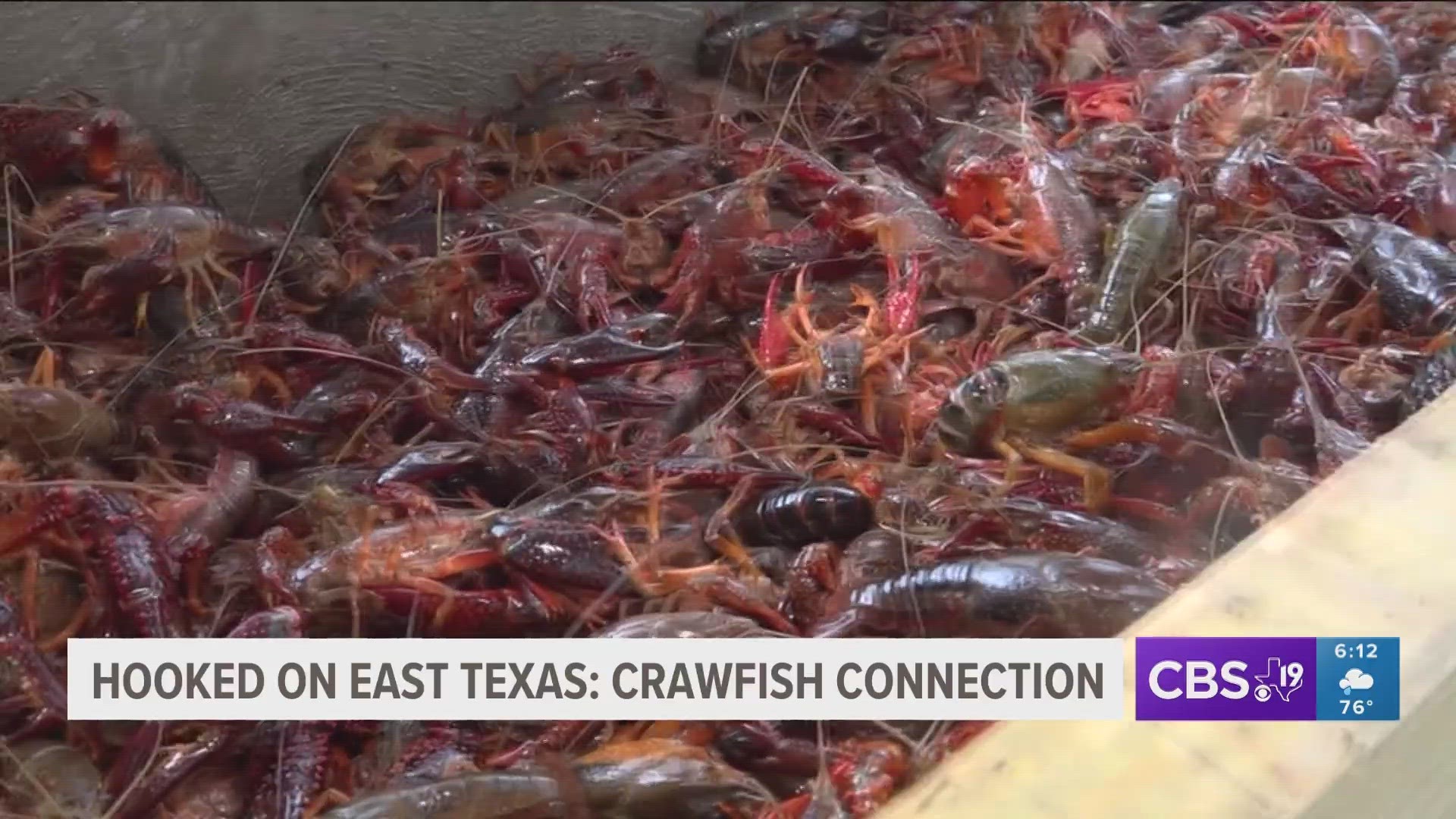TYLER, Texas — When the check engine light in the car comes on, it usually signals potential trouble ahead.
In a similar fashion, local researchers are looking at some small creatures to make sure there isn't a bigger problem brewing in regional waterways.
East Texans are mad for mudbugs. We eat our fair share -- 150 million pounds of crawfish harvested every year.
But crawfish, also known as crayfish, also play a vital role in the food chain. The tiny crustaceans eat decaying vegetation and then they're eaten by larger predators, such as largemouth bass.
Right now, there are 39 species of crawfish in Louisiana including the painted crawfish. The question on the table: should two sub-species, the Teche and Calcasieu painted crawfish, be elevated to species status?
At the University of Texas at Tyler, researchers are assisting in a study that looks into the genetics of crawfish to help answer that question.
Dr. Matt Greenwold and junior researcher Jana Swimberghe are teaming up with the Louisiana Department of Wildlife and Fisheries. They are testing genetic data to determine whether two sub-species of Louisiana’s painted crawfish should be classified as their own species of crawfish.
Jana Swimberghe is a visiting biology student from Belgium. Her aunt is the business school dean. She's visited East Texas often and understands the importance of these crawfish.
“Because now they are listed as subspecies and if they are actually species, we have to list them federally as engendered or imperiled," Swimberghe said.
So far, DNA sequencing suggests there may be another species that is a hybrid of the two species being studied.
“It’s kind of interesting," Greenwold added. "There are species sort of toward the west and one species that is toward the east and there’s a hybrid zone in between.”
Could these crawfish, like humans, have hook-up spots?
Greenwold thinks so.
“It suggests that the males of this one species are probably travelling into the hybrid zone and mating with the hybrids or the original species,” Greenwold said.
But there still isn’t a clear-cut answer, so the work continues in the UT Tyler labs.
“We’re still working on that. We to see that as well," Swimberghe said.
If new species of crawfish are discovered, researchers say it makes protecting the habitat more important. Louisiana, like East Texas, is concerned about commercialization and development of natural lands. Greenwold worries what would happen if natural environments of crawfish are threatened.
“They’re actually really good bio-indicators", Greenwold said. "And that’s a good thing and a bad thing. So, the presence of them in aquatic waterways helps you understand the health of that body of water, but at the same time when that body of water experiences contamination from any type of source, they’re the first ones to go."
Research is expected to wrap up in June. CBS19 hopes to bring you a follow-up when we hear what the research reveals.

